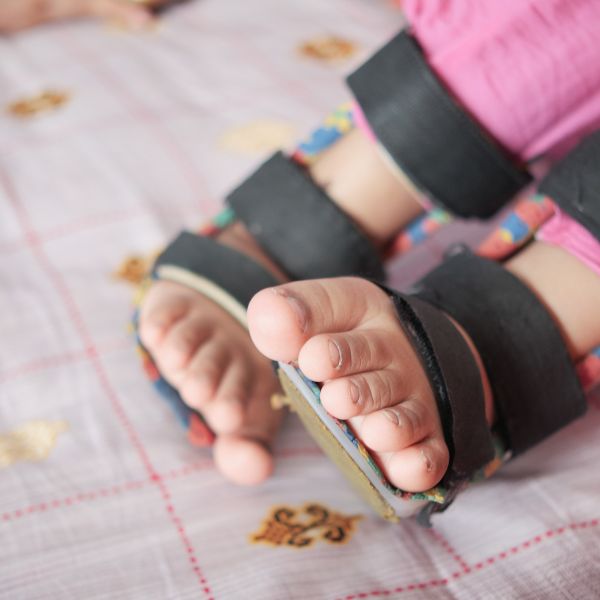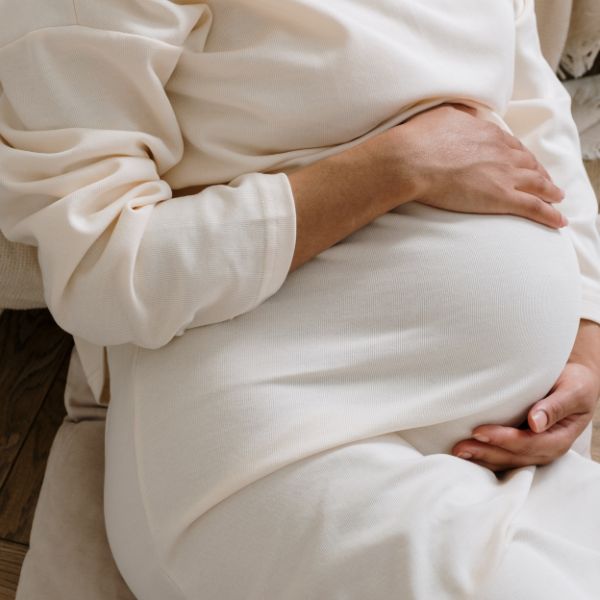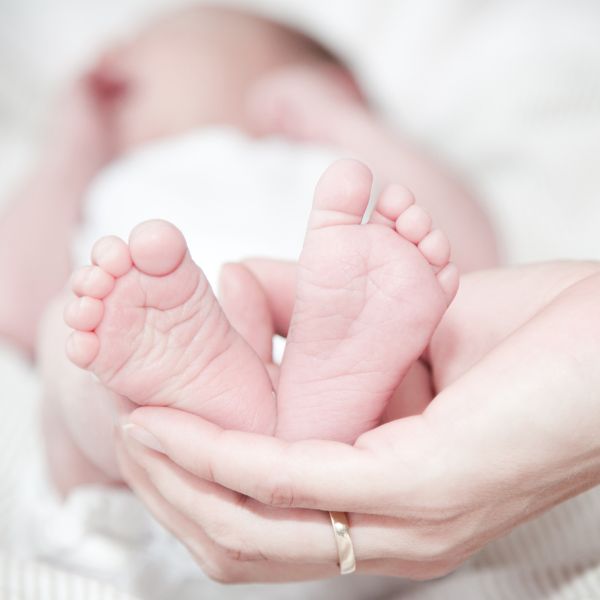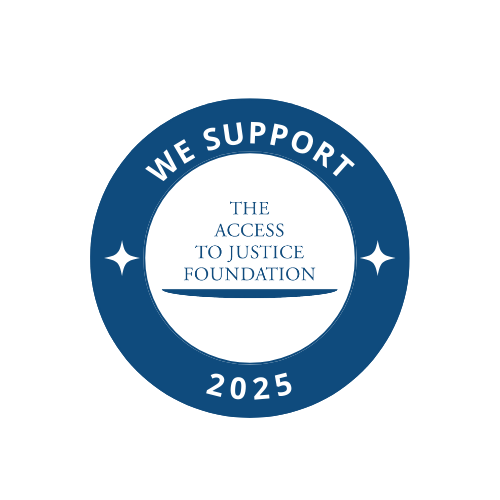International Group B Strep Awareness Month...
Klumpke’s Palsy Negligence Claims.
As a parent, you place a lot of trust in medical professionals to ensure your child is delivered healthy and unharmed. When they break that trust, resulting in your child having an injury like Klumpke’s Palsy, it can be devastating.
You not only have to worry about your childs immediate health, but their quality of life long into the future. Seeking out Klumpke’s Palsy Compensation will not change your childs condition, but it can hold the medical professionals who caused it accountable and ensure that you have the financial compensation to make the necessary at home adjustments to give your child the highest quality of life possible.
If you have received substandard care before, during, or shortly after the birth of your child, which caused a childbirth injury resulting in a condition such as Klumpke’s palsy, our team of medical negligence solicitors are here to help you by providing advice and support in making a claim for clinical negligence compensation.
What is Klumpke’s Palsy?
Klumpke’s palsy, also known as Dejerine-Klumpke palsy, or Klumpke’s paralysis, is a form of brachial plexus palsy. The brachial plexus is the term used to describe the network of spinal nerves which originate in the back of the neck and carry sensory signals and movement into the shoulders, armpits, and arms. When the brachial plexus is injured, which typically occurs due to neck trauma, the arm and hand can become painful, weak, numb, or completely paralysed.
In Klumpke’s palsy, it is typically the muscles of the forearm, wrist, and hand which are most affected. The cause of the condition is usually a birth injury to the neck and shoulder, for example during a difficult vaginal delivery, which results in the nerves becoming stretched or torn.
Klumpke’s palsy is named after the American neurologist Augusta Dejerine-Klumpke, and is considered to be a rare disorder, with approximately one to three per 1,000 live births in developed countries involving brachial plexus birth trauma. Although the condition most commonly occurs during labour and delivery, it can also develop in older children and adults who experience neck trauma and subsequent nerve damage.
Our Klumpke’s Palsy Negligence Expertise
Lanyon Bowdler’s team of birth injury medical negligence solicitors has years of experience helping claimant get compensation for injuries such as Klumpke’s palsy. Contact us today.
Our medical negligence team has a wealth of experience and expertise, and a proven track record in helping our clients to achieve the maximum amount of compensation they are entitled to in their clinical negligence claim. We work closely with you to completely understand your situation so as to achieve the best possible outcome for you and your family.
We are a Legal 500 Top Tier team, with additional accreditations by Chambers UK. We are always striving to keep up to date with current legal best practice, ensuring we are able to provide the high level of customer service that our clients expect, and deserve. If you’d like our people to be a part of your team, please don’t hesitate to give us a call today.
Your Klumpke’s Palsy Negligence questions answered
The symptoms of Klumpke’s palsy can range in intensity from mild and relatively subtle, to severe and more obvious to identify. In the vast majority of cases it is the right arm and hand which are most likely to be affected, although the condition can also affect the left very occasionally.
Babies and children suffering with Klumpke’s palsy will likely present with some combination of the following symptoms:
- Muscular atrophy in the forearm and/or hand
- Muscular weakness in the affected arm and/or hand
- Limited range of motion in the arm
- “Claw hand” where the wrist and fingers are constantly tightened
- Paralysis or limpness in the arm and/or hand
- Joint stiffness in the wrist and hand
- Numbness or pain in the affected arm and/or hand
- Babies may cry constantly due to the pain
- Horner’s syndrome which is the drooping of one eyelid
If your baby or child is displaying any of these symptoms we would advise you to seek medical help as soon as possible, especially if the birth was difficult or traumatic. Please don’t hesitate to get in touch with our team of specialist medical negligence solicitors who will be happy to advise you with regards to making a potential clinical negligence claim.
Klumpke’s palsy is most commonly caused by traumatic labour and a difficult vaginal delivery, for example if the baby is pulled out of the birth canal by their extended arm, or if their head and neck are pulled to the side awkwardly while their shoulders pass through the birth canal. These types of occurrences during childbirth could result in a brachial plexus injury, and they are often preventable.
There are a number of risk factors which may increase the likelihood of a traumatic labour, thus increasing the likelihood of a childbirth injury, including:
- Mothers over the age of 35
- A particularly petite mother
- Gestational diabetes
- Pelvic abnormalities
- Substantial antenatal weight gain
- Previous birth which led to Klumpke’s palsy
- Baby born in breech position
- Induced labour
- Improper use of assisted delivery tools like forceps
- Overdue pregnancy
- Difficulties with vaginal birth
- Prolonged time spent in active labour
- A large baby who is too big for the birth canal
If your baby has developed Klumpke’s palsy as a direct result of negligent care during pregnancy and childbirth, you may be able to claim compensation. Here at Lanyon Bowdler, our friendly and knowledgeable team of medical negligence lawyers are ready to help and support you.
In order to diagnose Klumpke’s palsy, a doctor will usually perform a physical examination, and they may also order various additional tests to further support the diagnosis, including:
- Electromyogram (EMG) – This is a test to measure the electrical activity of a muscle as it responds to a stimulus and can verify the presence and severity of nerve damage.
- Imaging studies – This could be any type of test which provides an internal image of the arm, wrist, and hand, such as an X-ray, MRI, CT scan, or ultrasound, in order to assess the damage to the bones and joints.
- Nerve conduction studies – The aim of these tests is to assess the effectiveness of an individual nerve in sending electrical signals between the spinal cord and the muscles.
Once a diagnosis of Klumpke’s palsy has been made, treatment can begin straight away. In many cases it is possible for babies to make a full recovery from the condition, and early treatment and intervention is the best way to avoid potential permanent joint and muscular contractions and paralysis.
In milder cases of Klumpke’s palsy it may be possible for the infant to recover fully and regain normal function of their arm without treatment. However, in most cases it will be necessary for medical intervention in order to prevent life-long problems with the affected arm, wrist, or hand.
The treatment options available will vary depending on the severity of the Klumpke’s palsy, but may include a selection of the following:
- Physiotherapy – Daily exercises can be effective in improving the range of motion in the affected arm, preventing stiffening, and promoting healing.
- Medication – Klumpke’s palsy may cause pain or a burning sensation so a doctor may prescribe oral medication or topical ointments to treat the pain.
- Muscle transfer – This involves the removal of a muscle or tendon from elsewhere in the body, and then attaching it to the affected arm in the event that the arm muscle has deteriorated.
- Nerve transfer – This involves a surgeon transferring a nerve from a different muscle to the affected arm in order to restore its nerve function.
- Nerve graft – In cases where the nerve has ruptured, it may be possible to repair it by splicing it with a separate nerve.
- Rehabilitation – Nerves recover very slowly and it may be several months or even years for the repaired nerves to affect the lower arm and hand, so post-surgery rehabilitation exercises can help to improve your child’s range of motion and build their strength.
In some cases, the treatment your child requires may not be available on the NHS, or you may receive much quicker treatment by paying for private medical care. If your child’s Klumpke’s palsy was a result of medical negligence, we can help you to claim the necessary compensation to help with the financial impact of caring for your child.
In mild cases of Klumpke’s palsy it is not uncommon for children to make a full recovery. According to the Genetic and Rare Diseases Information Centre (GARD) up to 88% of infants recover by the age of four months, and 92% recover by 12 months.
Infants with moderate Klumpke’s palsy may experience symptoms such as loss of sensation, arm limpness, a claw hand, joint stiffness, and severe pain in the affected arm as they grow. In cases of substantial nerve damage, it is possible for children to end up completely paralysed in the affected arm, and they are at increased risk of Horner’s Syndrome, which typically results in the drooping of the eyelid and anhidrosis (the inability to sweat) on one side of the face.
Klumpke’s palsy and Erb’s palsy are both forms of brachial plexus palsy, although of the two conditions, Klumpke’s palsy is rarer. The key difference between the two, however, is that Erb’s palsy affects the upper arm and shoulder, and Klumpke’s palsy affects the lower arm, wrist, and hand. In some cases, it is possible for an infant to experience damage to both the upper and lower nerves, affecting the movement in their shoulders, arms, and hands; this is known as total plexus involvement.
What our clients say.
Can I Claim Klumpke’s Palsy Compensation?
In some cases, Klumpke’s palsy can be prevented if the proper care procedures are followed during childbirth. For example, if antenatal screening indicates that the baby is too large to be safely delivered vaginally, a safer birthing option (for example a caesarean section) should be offered. If this isn’t the case, and a mother is allowed to labour which then leads to a traumatic birth and injuries that cause brachial plexus damage, it could mean that the medical team were negligent in their care of your baby.
During a difficult vaginal delivery, it may be necessary for the obstetrician to use forceps or ventouse to aid the delivery, and improper use of such equipment may lead to the baby being injured. If the medical team caring for you and your baby during pregnancy and childbirth have been negligent in their care, you could have a valid claim for compensation.
Whether the medical negligence took place at an NHS hospital or a private one, you can make a claim for financial compensation. No amount of compensation can change what you and your baby have been through, but it can provide the financial assistance you require to care for your child and give them the best possible chance of recovery.
Here at Lanyon Bowdler we understand how traumatic it is to see your baby suffer, which is why our empathetic and understanding team of medical negligence solicitors will carefully guide you through the process of making a compensation claim. Please don’t hesitate to get in touch with us and we’ll be more than happy to answer any questions you may have.
Is There a Time Limit for Making a Klumpke’s Palsy Medical Negligence Claim?
If you are submitting a clinical negligence claim for Klumpke’s palsy on behalf of your child, you can do so any time until their 18th birthday. Once your child turns 18, they then have a further three years in which to make a claim if it has not already been done. In some cases, for example if the individual does not have the mental capacity to make the claim themselves, the time limit may not apply.
For the best possible chance of making a successful claim we would highly recommend submitting your claim as early as possible after Klumpke’s palsy has become apparent. We will need to gather medical records, statements, and other forms of evidence to support your claim, and this gets harder to achieve with the passage of time.
Contact Lanyon Bowdler’s Medical Negligence Lawyers Today
If you think you or a family member has received negligent treatment before, during or after child birth which has caused Klumpke’s Palsy, then it is likely you are entitled to make a compensation claim. Give us a call or complete our online enquiry form, to see how our team can help you get the justice and compensation you deserve.
As a leading full service law firm in Wales with some of the UK’s most experienced Medical Negligence Lawyers, we have helped numerous people during some of their darkest times. There is no obligation or any charges for our initial assessment. By choosing Lanyon Bowdler for Birth Injury Solicitors, you can rest assured that you have the best legal expertise on your team.
Lanyon Bowdler’s medical negligence team is widely acclaimed and recognised as one of the best clinical negligence departments in the country. We have offices in Shrewsbury, Bromyard, Conwy, Hereford, Ludlow, Oswestry, and Telford, so are able to act for clients on Klumpke’s Palsy Compensation Claims in Shropshire, Herefordshire, Mid and North Wales and across the Midlands. Our track record makes us the perfect choice for Klumpke’s Palsy Solicitors in Birmingham, Wolverhampton and Worcester. We can represent you wherever you live in England or Wales.
We are committed to providing exceptional levels of client care and will work closely and considerately with you to help find the best outcomes and help to get your life back on track. If you wish to complain or seek compensation for an incident of medical or clinical negligence, our team of specialists will be able to deal with it in a sensitive and approachable way.
Meet the team.
Case studies.
Latest knowledge.
Our awards and accolades.
Get in touch.
"*" indicates required fields

 Back
Back



















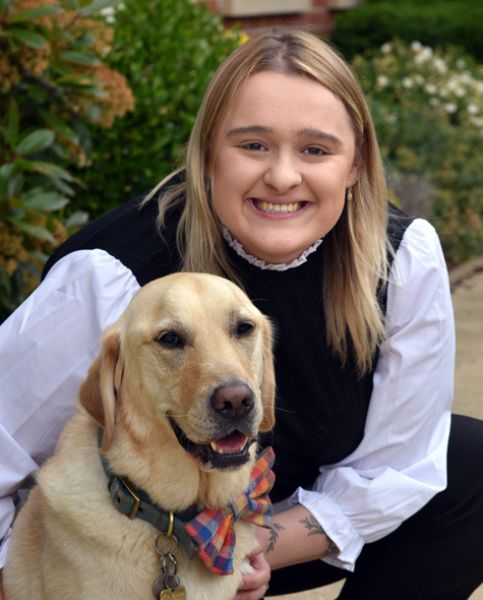






 Blog
Blog

